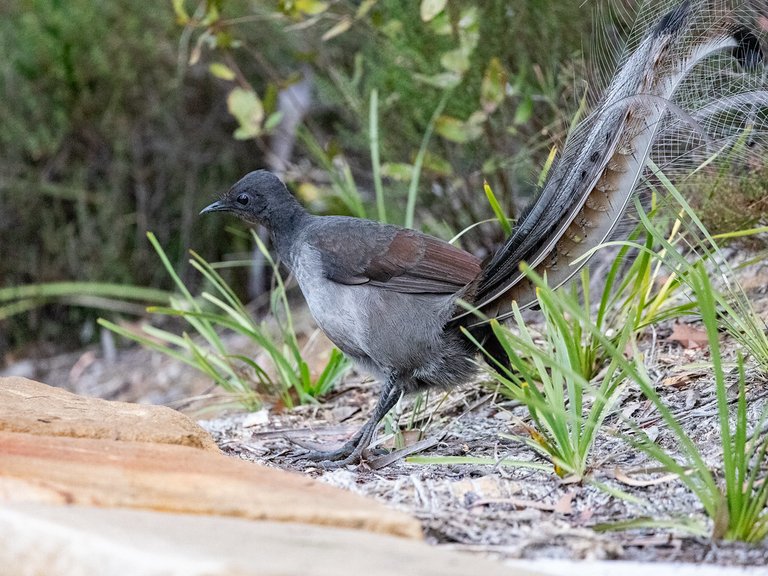Mimicking Car engines, to car alarm sound, Nintendo game sound, hawk sound, Chain saw and many more living and non living things, one bird has gotten the title for the master of mimicry and its name is the Lyrebird. The Australian bird has been mimicing its neighbors for over 10 million years which got its name from the way its feathers look which is similar to the ancient greek harp the lyre. The bird picture can be found on the Australian 10-cent coin and on the Australian 100 dollar bill note.
Talking about the tails, only the males have the fancy tails similar to the peacock and they use it when its time to display. There are two species or lyrebird which are the Superb Lyrebird which is big, and the Albert lyrebird which is smaller, and rearer than the superb lyrebird also it doesn’t have the lyre shaped feathers. The female suparb bird weighs about 1 kilogram and about 80cm long while the males are about 100cm long and weigh over 1.25kg.
The bird likes moist forest floors with lots of leaves so it can be able to search for food and have enough. The feet of the lyrebird are perfectly designed for perching which helps them with their landing and food finding. The bird has bug eyes, beaks that are pointed, necks that are averagely long, and legs that are firm and strong which helps them hunt and find food. Its feets are fast and can dig through litters of forest when looking and hunting for food as well as escape predation.
They have wings and can use it to fly but they are technically ground birds and would prefer the ground to the sky at any time because they mainly fred on insects such as millipedes, and centipedes, and also feed on spiders, worms, and snails but they can increase their appetite and go for lizards, frogs, and can manage plant seeds when they see one. They are so good at foraging that they can turn over 10 trucks of leaves yearly.
If you think Parrots are good at mimicking, then it is because you haven’t met a lyrebird. The males are so good at mimicking that they can mimic the boice of 20 other bird species, and they can remake or remix non-living sounds like alarms, camera shutters, your phone ring tone, baby cries and human voices and the makes need this ability so well because it is needed during mating and during mating season between June and August, they show off their collection of sounds as well as display feathers to the females so they can show they are the better mate as the more louder, interesting and complex the male sound library is, the more likely he goes home with the female.
You females can be uninterested sometimes, but the male lyrebird doesn’t give up easily just as it dances and shows of its feather, it can beging to make sounds of birds and other animals at once which indicates a predator around the corner so the females can run towards him and the chances of mating increases. After mating, the female lyrebirds build a nest in hidden places, lay their eggs and incubate them for about 40 to 50 days, and raise the chicks for 6 to 10 weeks without the help of daddy lyrebird.
https://s3.animalia.bio/animals/photos/full/original/superb-lyrebird-5.webp
animalia.bio
All lyrebird look alike as chicks but once the birds reaches 4 months, the males begin to grow tail feathers which would keep growing until 10 uears when it reaches its full length. 10 years looks much but the bird can live up to 30 years in the wild. While humans have learned to protect them so their population can increase, cats and foxes aren’t going to a good dinner or breakfast go because they want to preserve the bird.
This bird is impressive and if they can learn to mimic sounds that can chase away cats like vacuum cleaners or i do not know what would chase away foxes but if they can learn those sounds, there is a chance they can live longer in the wild.
https://australian.museum/learn/animals/birds/superb-lyrebird/
https://www2.environment.nsw.gov.au/topics/animals-and-plants
https://ebird.org/species/suplyr1
https://a-z-animals.com/animals/lyrebird/


 To earn 100% daily curation rewards in Hive + 10% of your delegation each day in Ecency Points and if you write well, you might even get curated!
To earn 100% daily curation rewards in Hive + 10% of your delegation each day in Ecency Points and if you write well, you might even get curated!